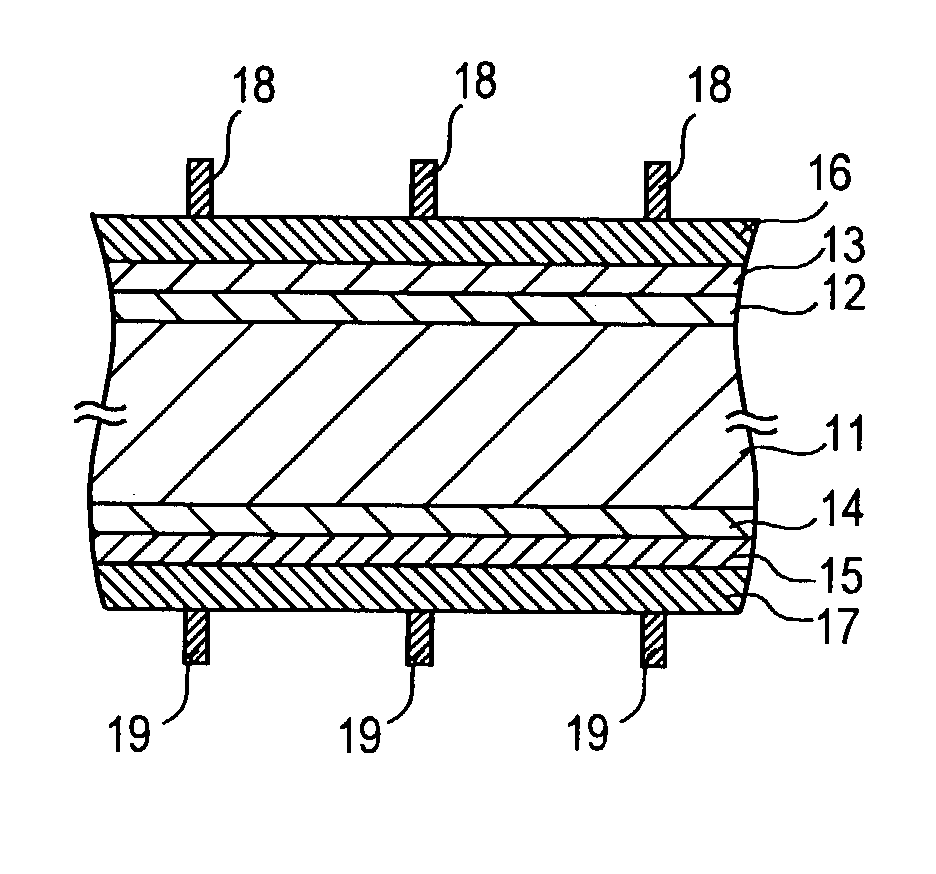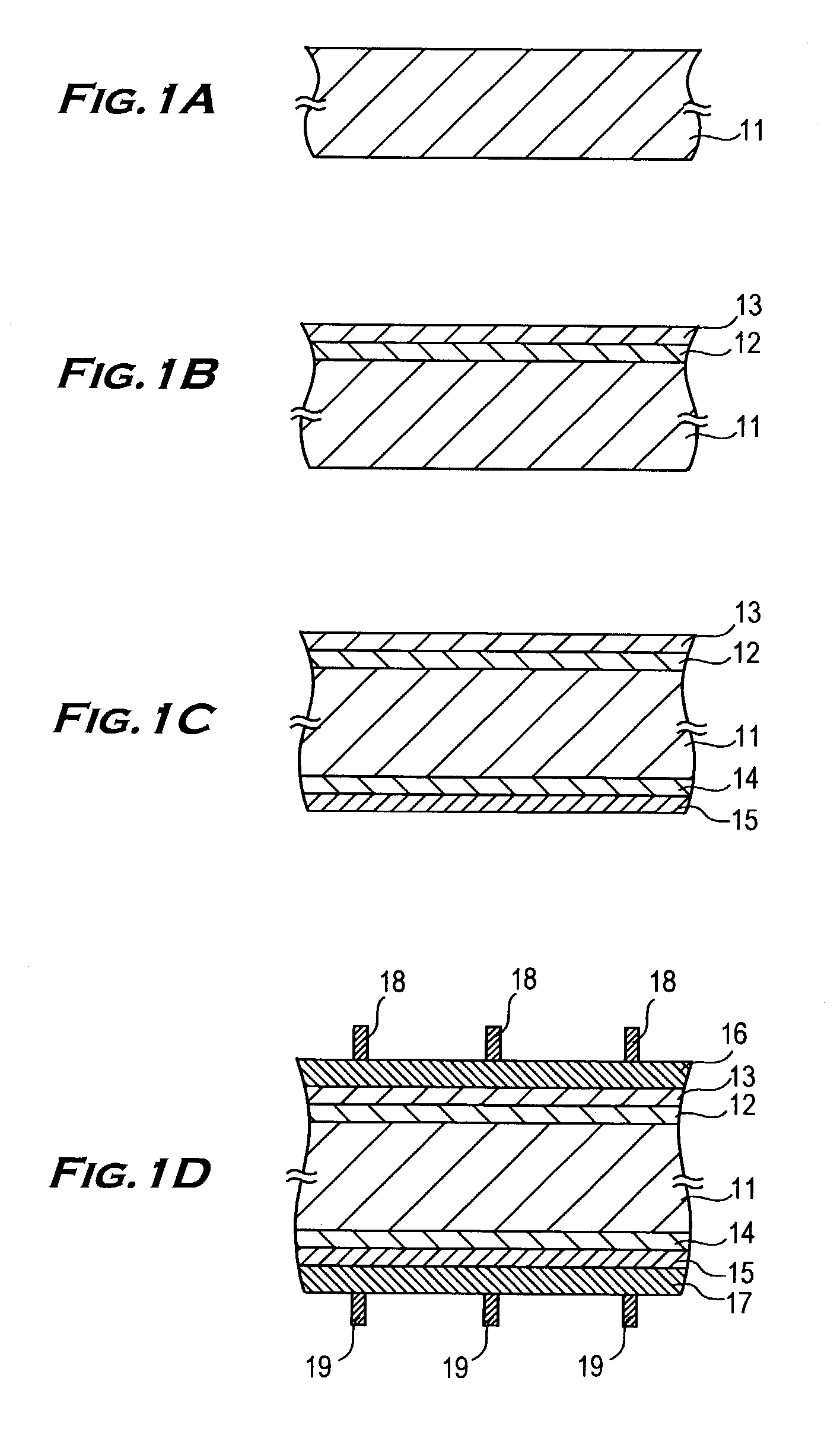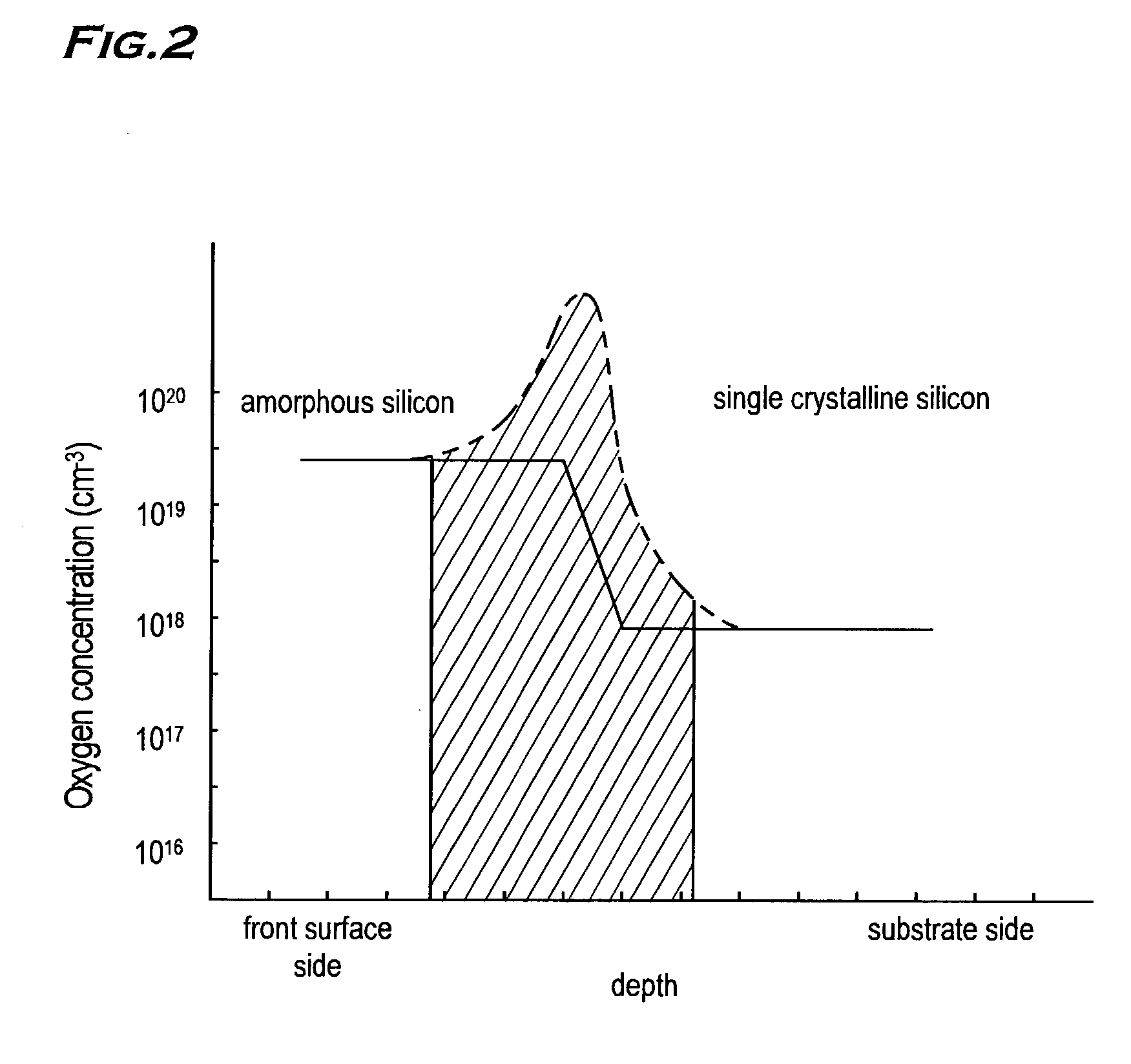Photovoltaic device and manufacturing method thereof
a photovoltaic device and manufacturing method technology, applied in the field of photovoltaic devices and photovoltaic devices manufacturing methods, to achieve the effect of reducing the average coordination number
- Summary
- Abstract
- Description
- Claims
- Application Information
AI Technical Summary
Benefits of technology
Problems solved by technology
Method used
Image
Examples
Embodiment Construction
[0032]Following is a description on an embodiment of this invention with reference to drawings. FIGS. 1A to 1D are cross sectional views showing a photovoltaic device in each manufacturing process of the embodiment according to the invention.
[0033]A single crystalline silicon substrate, a polycrystalline silicon substrate or the like are used as a crystalline semiconductor substrate. In this embodiment, a single crystalline substrate 11 of resistivity not more than 5 Ωcm and 300 μm in thickness is employed. Both front and rear surfaces of this single crystalline silicon substrate 11 are textured by anisotropic etching using alkaline solution such as sodium hydroxide solution or potassium hydroxide solution.
[0034]The single crystalline silicon substrate 11 is cleaned and put into a vacuum chamber to be heated at temperatures up to 200° C., whereby the moisture on the substrate is almost removed. In this embodiment, the substrate is heated up to 170° C. Next, hydrogen gas (H2) is intr...
PUM
| Property | Measurement | Unit |
|---|---|---|
| temperature | aaaaa | aaaaa |
| thickness | aaaaa | aaaaa |
| resistivity | aaaaa | aaaaa |
Abstract
Description
Claims
Application Information
 Login to View More
Login to View More - R&D
- Intellectual Property
- Life Sciences
- Materials
- Tech Scout
- Unparalleled Data Quality
- Higher Quality Content
- 60% Fewer Hallucinations
Browse by: Latest US Patents, China's latest patents, Technical Efficacy Thesaurus, Application Domain, Technology Topic, Popular Technical Reports.
© 2025 PatSnap. All rights reserved.Legal|Privacy policy|Modern Slavery Act Transparency Statement|Sitemap|About US| Contact US: help@patsnap.com



